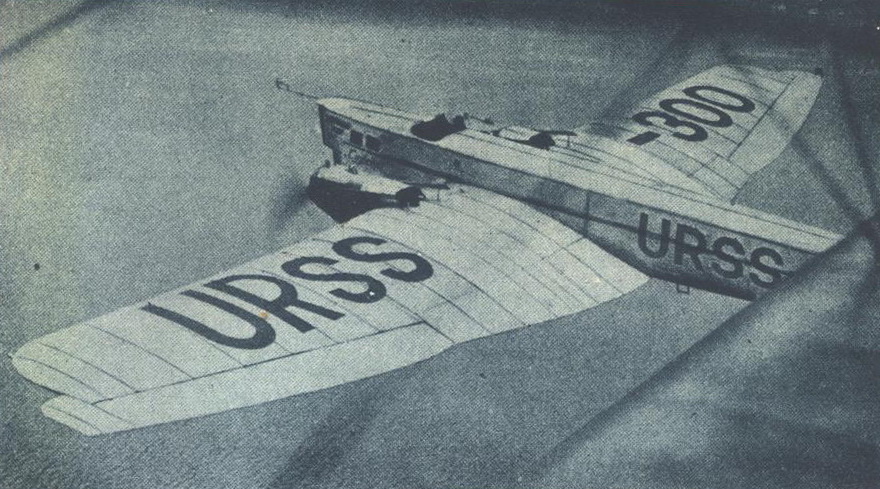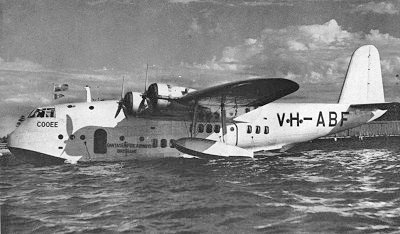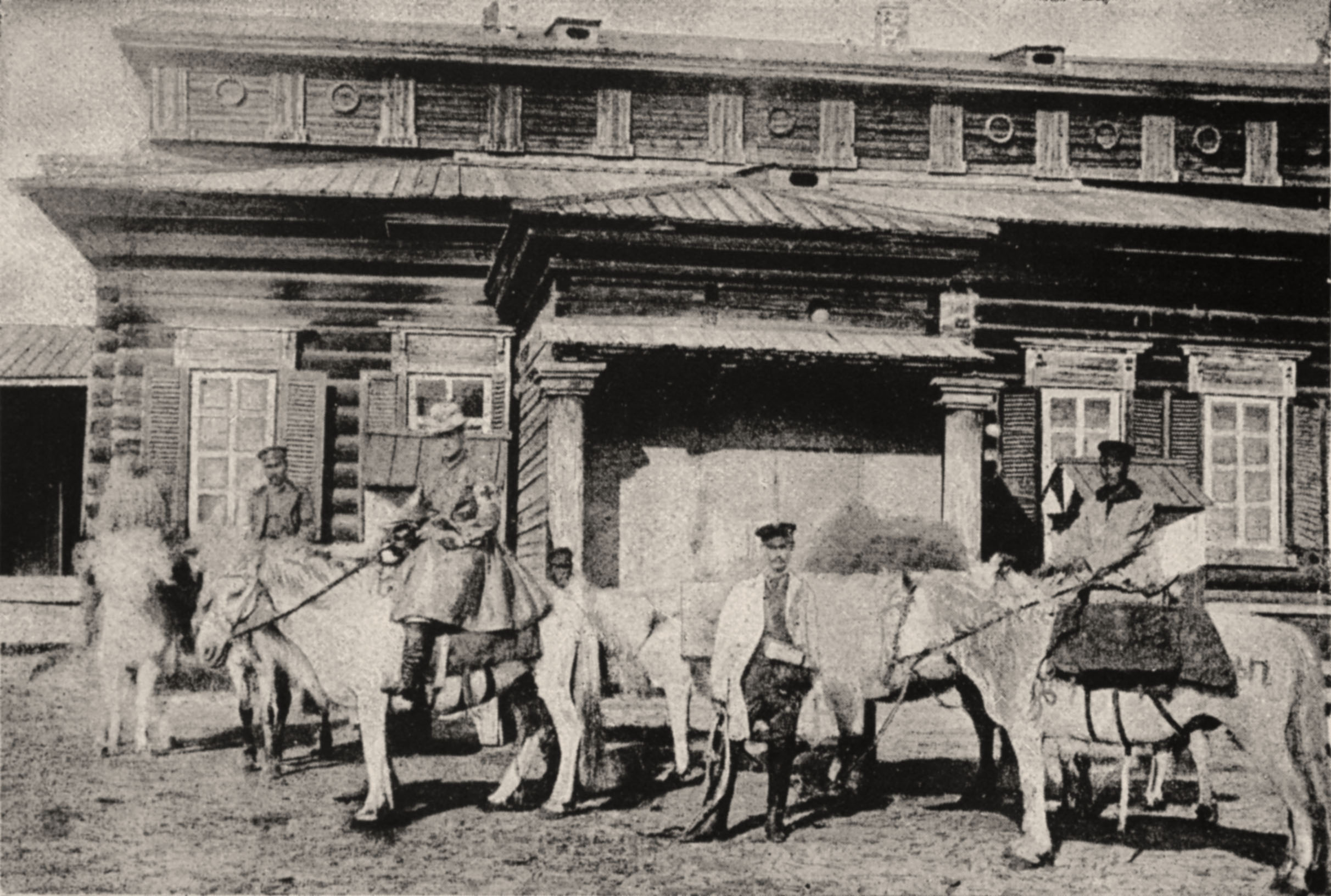|
Avia Arktika
Aviaarktika was a Soviet airline which started operations on 1 September 1930 and was absorbed by Aeroflot on 3 January 1960. History Aviaarktika was the flying branch of the Department of Polar Aviation of Glavsevmorput. Its first head was Mark Shevelev and it was originally based in Krasnoyarsk. It moved to Moscow in 1932. Aviarktika established routes along the rivers and lakes of Siberia and Northern Russia; the Ob River with a base at Omsk, on the Irtysh and Yenisei rivers, with a base at Krasnoyarsk, on the Angara near Lake Baikal at Irkutsk, and at Yakutsk on the Lena. Fleet Initially Aviaarktika flew the Junkers F.13 floatplane and six Dornier Wal flying boats. By 1933 there were 42 aircraft including Tupolev ANT-4 and ANT-6's. AVIAARKTIKA Tupolev ANT-4, CCCP-H317, currently located at the Ulyanovsk Aircraft Museum in Ulyanovsk Baratayevka Airport (Central) (UWLL), is the only surviving example of the ANT-4. CCCP-H317 crash-landed in Siberian tundra in 1944 and was ... [...More Info...] [...Related Items...] OR: [Wikipedia] [Google] [Baidu] |
City
A city is a human settlement of notable size.Goodall, B. (1987) ''The Penguin Dictionary of Human Geography''. London: Penguin.Kuper, A. and Kuper, J., eds (1996) ''The Social Science Encyclopedia''. 2nd edition. London: Routledge. It can be defined as a permanent and densely settled place with administratively defined boundaries whose members work primarily on non-agricultural tasks. Cities generally have extensive systems for housing, transportation, sanitation, utilities, land use, production of goods, and communication. Their density facilitates interaction between people, government organisations and businesses, sometimes benefiting different parties in the process, such as improving efficiency of goods and service distribution. Historically, city-dwellers have been a small proportion of humanity overall, but following two centuries of unprecedented and rapid urbanization, more than half of the world population now lives in cities, which has had profound consequ ... [...More Info...] [...Related Items...] OR: [Wikipedia] [Google] [Baidu] |
Yenisei River
The Yenisey (russian: Енисе́й, ''Yeniséy''; mn, Горлог мөрөн, ''Gorlog mörön''; Buryat: Горлог мүрэн, ''Gorlog müren''; Tuvan: Улуг-Хем, ''Uluğ-Hem''; Khakas: Ким суғ, ''Kim suğ''; Ket: Ӄук, ''Quk''; Nenets: Ензя-ям’, ''Enzja-jam''), also romanised as Yenisei, Enisei, or Jenisej, is the fifth-longest river system in the world, and the largest to drain into the Arctic Ocean. Rising in Mungaragiyn-gol in Mongolia, it follows a northerly course before draining into the Yenisey Gulf in the Kara Sea. The Yenisey divides the Western Siberian Plain in the west from the Central Siberian Plateau to the east; it drains a large part of central Siberia. It is the central one of three large Siberian rivers that flow into the Arctic Ocean (the other two being the Ob and the Lena). The maximum depth of the Yenisey is and the average depth is . The depth of river outflow is and inflow is . Geography The Yenisey proper, f ... [...More Info...] [...Related Items...] OR: [Wikipedia] [Google] [Baidu] |
Ulyanovsk Aircraft Museum
Ulyanovsk Aircraft Museum, also known as Muzey Grazhdanskoy Aviatsii or Museum of the History of Civil Aviation, is a public museum that displays Soviet aircraft which are retired from service, and exhibits over 4000 items.It is located next to the Ulyanovsk Baratayevka Airport in Ulyanovsk, Russia. The museum is owned by the Ulyanovsk Institute of Civil Aviation. History The creation of the museum was led by the head of the department of educational institutions of the USSR Civil Aviation Administration Darymov Yuri Petrovich and the deputy head of the center of the CA CMEA Vladimir Pavlovich Deldyuzhov. In 1983, the museum was opened on the territory of the Ulyanovsk Higher Civil Aviation School. In 1989, the museum was awarded the honorary title of "People's Museum". In 1999, the museum became a member of the Association of Technical Museums of the International Union ICOM. On 14 January 2016, an exposition dedicated to Air Chief Marshal Boris Pavlovich Bugaev was opened ... [...More Info...] [...Related Items...] OR: [Wikipedia] [Google] [Baidu] |
Tupolev TB-3
The Tupolev TB-3 (russian: Тяжёлый Бомбардировщик, Tyazhyolyy Bombardirovshchik, Heavy Bomber, civilian designation ANT-6) was a monoplane heavy bomber deployed by the Soviet Air Force in the 1930s and used during the early years of World War II. It was the world's first cantilever wing four-engine heavy bomber. Despite obsolescence and being officially withdrawn from service in 1939, the TB-3 performed bomber and transport duties throughout much of World War II. The TB-3 also saw combat as a Zveno project fighter mothership and as a light tank transport. Development In 1925, the Soviet Air Force approached TsAGI with a requirement for a heavy bomber with total engine output of and either wheeled or float landing gear. Tupolev OKB started design work in 1926 with the government operational requirements finalized in 1929.Gunston 1995, pp. 384–385. The Tupolev TB-1 was taken as the basis for the design and the aircraft was initially powered by Curtiss V ... [...More Info...] [...Related Items...] OR: [Wikipedia] [Google] [Baidu] |
Tupolev TB-1
The Tupolev TB-1 (development name ANT-4) was a Soviet bomber aircraft, an angular monoplane that served as the backbone of the Soviet bomber force for many years, and was the first large all-metal aircraft built in the Soviet Union. Design and development In 1924, the Soviet Air Force instructed TsAGI, (Центра́льный аэрогидродинами́ческий институ́т (ЦАГИ) – ''Tsentralniy Aerogidrodinamicheskiy Institut'' or Central Aerohydrodynamic Institute) to design a heavy-bomber. TsAGI gave the task to the division led by Andrei Tupolev.Gunston 1995, p.381. Tupolev's team designed a twin-engined all-metal monoplane with a corrugated Duralumin skin — based on Tupolev's earlier work utilizing the all-metal aircraft design techniques first pioneered by Hugo Junkers in 1918 — powered by two Napier Lion engines, and named the ANT-4.Duffy and Kandalov 1996, p.36. The first prototype was built during 1925 on the second floor of Tupolev's facto ... [...More Info...] [...Related Items...] OR: [Wikipedia] [Google] [Baidu] |
Flying Boat
A flying boat is a type of fixed-winged seaplane with a hull, allowing it to land on water. It differs from a floatplane in that a flying boat's fuselage is purpose-designed for floatation and contains a hull, while floatplanes rely on fuselage-mounted floats for buoyancy. Though the fuselage provides buoyancy, flying boats may also utilize under-wing floats or wing-like projections (called sponsons) extending from the fuselage for additional stability. Flying boats often lack landing gear which would allow them to land on the ground, though many modern designs are convertible amphibious aircraft which may switch between landing gear and flotation mode for water or ground takeoff and landing. Ascending into common use during the First World War, flying boats rapidly grew in both scale and capability during the interwar period, during which time numerous operators found commercial success with the type. Flying boats were some of the largest aircraft of the first half of ... [...More Info...] [...Related Items...] OR: [Wikipedia] [Google] [Baidu] |
Dornier Wal
The Dornier Do J ''Wal'' ("whale") is a twin-engine German flying boat of the 1920s designed by ''Dornier Flugzeugwerke''. The Do J was designated the Do 16 by the Reich Air Ministry (''RLM'') under its aircraft designation system of 1933. Design and development The Do J had a high-mounted strut-braced parasol wing with two piston engines mounted in tandem in a central nacelle above the wing; one engine drove a tractor and the other drove a pusher propeller. The hull made use of Claudius Dornier's patented sponsons on the hull's sides, first pioneered with the earlier, Dornier-designed Zeppelin-Lindau Rs.IV flying boat late in World War I. The Do J made its maiden flight on 6 November 1922. The flight, as well as most production until 1932, took place in Italy because of the restrictions on aviation in Germany after World War I under the terms of the Treaty of Versailles. Dornier began to produce the ''Wal'' in Germany in 1931; production went on until 1936. In the m ... [...More Info...] [...Related Items...] OR: [Wikipedia] [Google] [Baidu] |
Floatplane
A floatplane is a type of seaplane with one or more slender floats mounted under the fuselage to provide buoyancy. By contrast, a flying boat uses its fuselage for buoyancy. Either type of seaplane may also have landing gear suitable for land, making the vehicle an amphibious aircraft. British usage is to call "floatplanes" "seaplanes" rather than use the term "seaplane" to refer to both floatplanes and flying boats. Use Since World War II and the advent of helicopters, advanced aircraft carriers and land-based aircraft, military seaplanes have stopped being used. This, coupled with the increased availability of civilian airstrips, have greatly reduced the number of flying boats being built. However, numerous modern civilian aircraft have floatplane variants, most of these are offered as third-party modifications under a supplemental type certificate (STC), although there are several aircraft manufacturers that build floatplanes from scratch. These floatplanes have found t ... [...More Info...] [...Related Items...] OR: [Wikipedia] [Google] [Baidu] |
Junkers F
Junkers Flugzeug- und Motorenwerke AG (JFM, earlier JCO or JKO in World War I, English: Junkers Aircraft and Motor Works) more commonly Junkers , was a major German aircraft and aircraft engine manufacturer. It was founded there in Dessau, Germany, in 1895 by Hugo Junkers, initially manufacturing boilers and radiators. During World War I and following the war, the company became famous for its pioneering all-metal aircraft. During World War II the company produced the German army's Luftwaffe planes, as well as piston and jet aircraft engines, albeit in the absence of its founder, who had been removed by the Nazis in 1934. History Early inter-war period In the immediate post-war era, Junkers used their J8 layout as the basis for the F-13, first flown on 25 June 1919 and certified airworthy in July of the same year. This four passenger monoplane was the world's first all-metal airliner. Of note, in addition to significant European sales, some twenty-five of these airplanes ... [...More Info...] [...Related Items...] OR: [Wikipedia] [Google] [Baidu] |
ANT-4 In Ulyanovsk Aircraft Museum
The Tupolev TB-1 (development name ANT-4) was a Soviet bomber aircraft, an angular monoplane that served as the backbone of the Soviet bomber force for many years, and was the first large all-metal aircraft built in the Soviet Union. Design and development In 1924, the Soviet Air Force instructed TsAGI, (Центра́льный аэрогидродинами́ческий институ́т (ЦАГИ) – ''Tsentralniy Aerogidrodinamicheskiy Institut'' or Central Aerohydrodynamic Institute) to design a heavy-bomber. TsAGI gave the task to the division led by Andrei Tupolev.Gunston 1995, p.381. Tupolev's team designed a twin-engined all-metal monoplane with a corrugated Duralumin skin — based on Tupolev's earlier work utilizing the all-metal aircraft design techniques first pioneered by Hugo Junkers in 1918 — powered by two Napier Lion engines, and named the ANT-4.Duffy and Kandalov 1996, p.36. The first prototype was built during 1925 on the second floor of Tupolev's facto ... [...More Info...] [...Related Items...] OR: [Wikipedia] [Google] [Baidu] |
Lena River
The Lena (russian: Ле́на, ; evn, Елюенэ, ''Eljune''; sah, Өлүөнэ, ''Ölüöne''; bua, Зүлхэ, ''Zülkhe''; mn, Зүлгэ, ''Zülge'') is the easternmost of the three great Siberian rivers that flow into the Arctic Ocean (the other two being the Ob and the Yenisey). Permafrost underlies most of the catchment, 77% of which is continuous. It is long, and has a drainage basin of . The Lena is the eleventh-longest river in the world, and the longest river entirely within Russia. Course Originating at an elevation of at its source in the Baikal Mountains south of the Central Siberian Plateau, west of Lake Baikal, the Lena flows northeast across the Lena-Angara Plateau, being joined by the Kirenga, Vitim and Olyokma. From Yakutsk it enters the Central Yakutian Lowland and flows north until joined by its right-hand tributary the Aldan and its most important left-hand tributary, the Vilyuy. After that, it bends westward and northward, flowing between ... [...More Info...] [...Related Items...] OR: [Wikipedia] [Google] [Baidu] |
Yakutsk
Yakutsk (russian: Якутск, p=jɪˈkutsk; sah, Дьокуускай, translit=Djokuuskay, ) is the capital city of the Sakha Republic, Russia, located about south of the Arctic Circle. Fueled by the mining industry, Yakutsk has become one of Russia's most rapidly growing regional cities, with a population of 355,443 at the 2021 Census. Yakutsk — where the average annual temperature is , winter high temperatures are consistently well below , and the record low is ,Погода в Якутске. Температура воздуха и осадки. Июль 2001 г. (in Russian) — is the coldest city in the world. Yakutsk is also the largest city located in [...More Info...] [...Related Items...] OR: [Wikipedia] [Google] [Baidu] |





.jpg)



